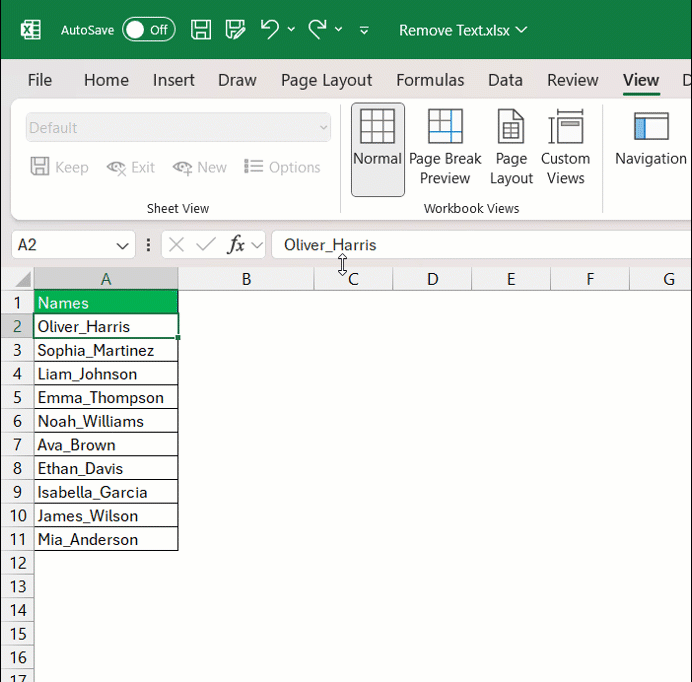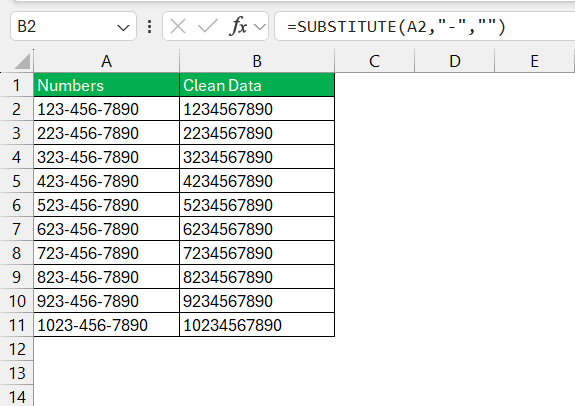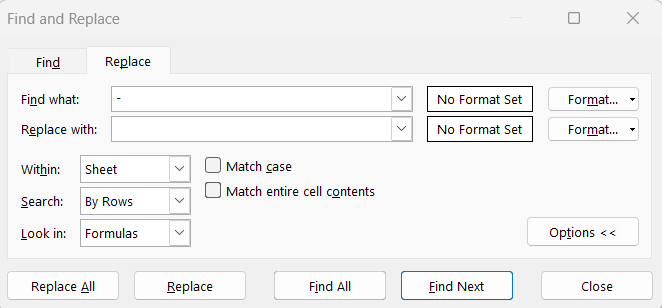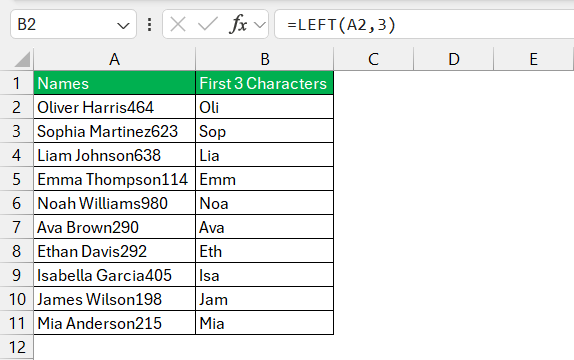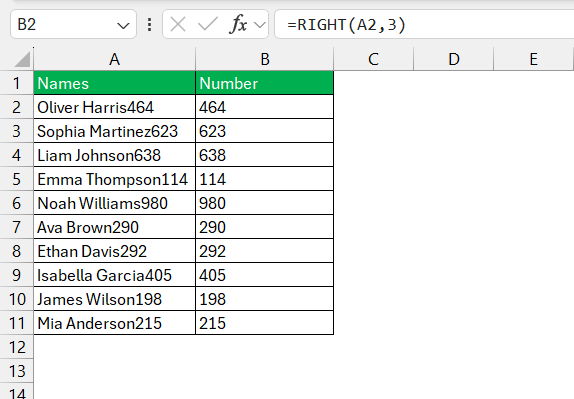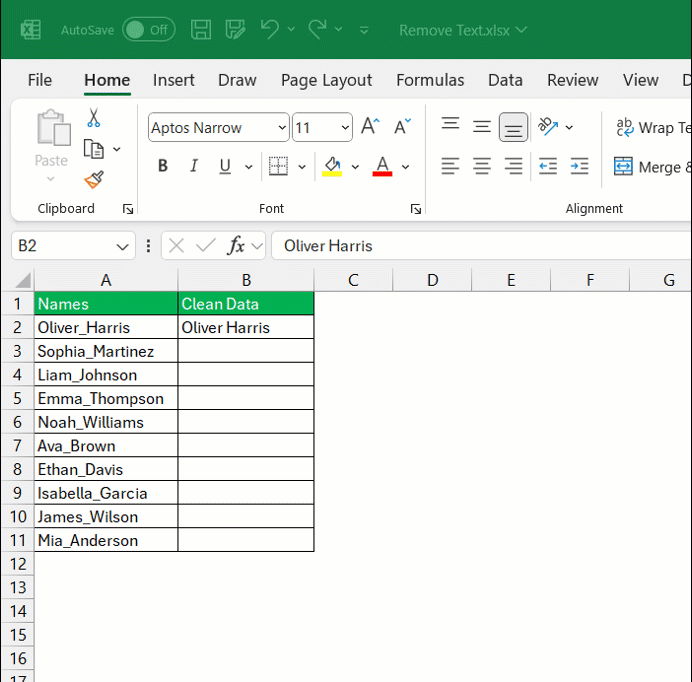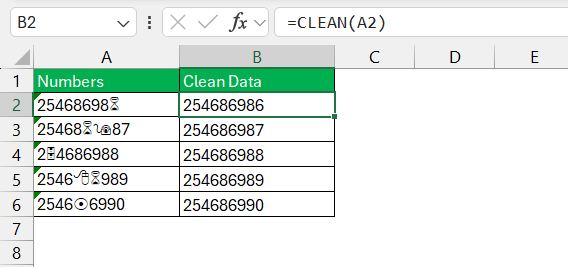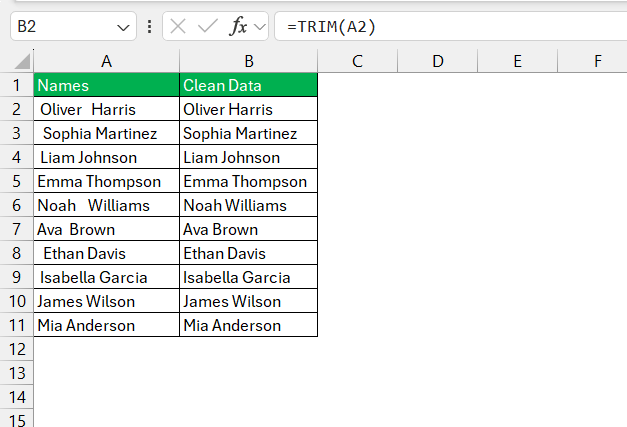Data refinement, much like refining crude oil, is essential for powering informed decisions. Accuracy is paramount in strategic choices, whether analyzing sales trends or managing budgets. Microsoft Excel‘s adeptness in text manipulation enables precise data shaping, from format alignment to import/export preparation. This article delves into Excel’s simple tricks and advanced formulas for removing unwanted text, ensuring your datasets are clean and ready for analysis.
Key Takeaways:
- Direct Removal with Backspace/Delete: Swiftly eliminate unwanted text with the backspace or delete key, ideal for quick fixes and individual cell cleanup.
- The Mystical SUBSTITUTE Function: Transform text magically with the SUBSTITUTE function, specifying changes, targets, and replacements to banish unwanted characters effortlessly.
- Harnessing FIND and REPLACE: Conquer unwanted text with Excel’s Find and Replace feature, easily accessible via keystroke or menu selection, effectively replacing or removing targeted strings.
- Cutting Out Characters with LEFT, RIGHT, and MID: Use Excel’s LEFT, RIGHT, and MID functions to selectively remove characters from text strings, allowing precise trimming and extraction tailored to your data needs.
- Flash Fill: The Sorcerer’s Shortcut: Experience Flash Fill’s magic, Excel’s intuitive tool for recognizing and replicating data patterns, simplifying tasks like separating first names from full names effortlessly.
Table of Contents
Mastering the Magic of Excel
The Importance of Clean Data Management
Data is likened to the new oil, but just as crude oil must be refined to fuel engines, data must also be cleaned to power informed decisions. Clean data is accurate data, and accurate data sits at the heart of making strategic, evidence-based choices. Whether you’re dissecting sales trends, parsing through customer feedback, or simply organizing a personal budget, tidy data ensures that your conclusions are not just guesses, but insights grounded in reality.
Excel’s Flexibility for Text Manipulation
Excel truly shines when it comes to shaping and bending text to your will. It’s not merely about crunching numbers; Excel empowers you with the flexibility to slice and dice text strings as you please. With a bounty of functions and tools at your fingertips, you can effortlessly restructure, extract, and clean data, customizing it to meet your specific needs and ensuring that your datasets are scrub-ready and primed for analysis.
Whether it’s aligning data formats or prepping for import/export, Excel’s text manipulation prowess is a powerful ally in your data management toolkit.
Abracadabra! Simple Tricks to Remove Unwanted Text
Method 1: Direct Removal with Backspace or Delete
When the task calls for speed and simplicity, the backspace or delete key is your trusty wand. Say goodbye to unwanted text with just a click and a tap. Here’s how it works: click to highlight the pesky text in the cell, and with a press of backspace or delete, watch as the text vanishes before your eyes.
It’s a straightforward enchantment suitable for any muggle or seasoned Excel wizard alike, perfect for those instances when you need a quick fix to clear out individual cells.
Method 2: The Mystical SUBSTITUTE Function
The SUBSTITUTE function in Excel is nothing short of magical for text transformation tasks. Imagine you have a column of phone numbers brimming with dashes that you need to disappear. With SUBSTITUTE, you can make short work of it. This function requires you to specify the text you want to change (imagine a cell that reads “123-456-7890”), what to look for (the pesky “-“), and what to replace it with (in this case, an empty string).
So, =SUBSTITUTE(A1, “-“, “”) will transform that cell into a clean “1234567890.” It’s that easy! And remember, SUBSTITUTE doesn’t stop at the first instance; it banishes every occurrence in sight, all while being case-sensitive to heed your exact command.
Method 3: Harnessing FIND and REPLACE Powers
Embark on a quest to vanquish unwanted text from your Excel realm by harnessing the mighty powers of the Find and Replace feature. Navigate to the Home tab, summon the Find & Select tool, and choose Replace—or simply conjure it with Ctrl+H.
In the “Find what” dungeon, enter the text or pattern you wish to exile, and in the “Replace with” tower, provide the new text or leave it blank to merely erase the unwanted strings. With a wave of the “Replace All” wand, every instance is transformed or obliterated across your selected range of cells.
Keep in mind, that the Find and Replace enchantment is not limited by mere text—it can also seek out and replace numbers, dates, and even wildcards for complex patterns.
Conjuring Text Away with Advanced Excel Formulas
Cutting Out Characters with LEFT, RIGHT, and MID
When faced with the challenge of extracting the right sliver of text from a cell, the LEFT, RIGHT, and MID functions are your trusty sidekicks. Need to trim a fixed number of characters from the start? The LEFT function takes the stage by effortlessly peeling off the desired piece, leaving the rest intact. Similarly, the RIGHT function jumps in when your quest demands characters to be excised from the text’s end. The MID function, a master of intrigue, slices a specific segment out from the middle of your text string with precision.
For instance, if you’re looking to remove the initial 3 characters from the name list, LEFT hands you “Oli” on a silver platter.
While RIGHT would serve the same when you need to last 3 characters from the end.
Need to cut out characters from the center? MID is your able helper, selecting just the parts you want, like extracting “23” from the middle of “abc123”.
Combine these functions with others like LEN to dynamically handle text of variable lengths, ensuring every character outside your targeted bounds is unscathed by your data-cleansing incantations.
Flash Fill: The Sorcerer’s Shortcut
Flash Fill in Excel is like a sorcerer’s spell that miraculously understands your intentions and replicates them with a quick flick. Imagine you’re separating first names from a list of full names. Type the first name alone in the cell adjacent to the first full name, hit enter, start typing the next first name, and – presto! Flash Fill anticipates the pattern and completes the rest for you. If Excel hesitates to show its magic, press Ctrl+E to encourage Flash Fill to do its thing.
Sometimes, to coax out the correct pattern, you may need to provide a couple more examples. It’s essential to note that Flash Fill works best with consistent and detectable patterns; if your data is too irregular, Flash Fill might withdraw its hand, prompting you to seek alternative spells from your Excel grimoire.
Special Incantations for Unique Situations
Deleting Nonprintable Characters
When your Excel documents are haunted by invisible specters in the form of nonprintable characters, fear not, for there exists a spell to purify your data. These ghostly characters often creep in during data import from other systems or when copying and pasting from external sources. They may be unseen, but their presence can wreak havoc, from skewing your sorting rituals to possessing your formulas, causing them to malfunction.
To exorcise these characters, call upon the CLEAN function. Simply type =CLEAN(A1) where A1 is the cell under suspicion, and the nonprintable characters will be banished from the cell, leaving behind a pristine string of text.
It’s particularly effective against those first 32 nonprinting characters in the ASCII table, restoring order to your dataset.
Tackling Tricky Spaces with TRIM
Unseen to the eye but potentially destructive to your data integrity are the extra spaces that may be lurking in your cells. Whether leading, trailing, or in between words, these spaces can make your data look untidy and disrupt functions and formulas. Fret not, for the TRIM function is the purifier that you seek. With a simple chant—=TRIM(A2)—you can strip all superfluous spaces, leaving a perfectly spaced celestial dance of characters.
FAQs
Is there a formula to remove text in Excel?
Absolutely, you can cast away unwanted text in Excel using several formulas like SUBSTITUTE, REPLACE, LEFT, RIGHT, MID, and TRIM to mention a few. Each serves a unique purpose, whether you’re aiming to replace certain text, extract specific parts of a string, or just clean up extraneous spaces.
How do I remove text from a cell in Excel but keep numbers?
To remove text but keep numbers in a cell, use a combination of the SUBSTITUTE function with an array of numbers. Here’s a quick enchantment: =SUMPRODUCT(MID(0&A1,LARGE(INDEX(ISNUMBER(--MID(A1,ROW($1:$300),1))*ROW($1:$300),),ROW($1:$300))+1,1)*10^ROW($1:$300)/10). This charm transforms A1, spellbinding Excel to keep only the numbers.
Can I Remove Parts of Text Based on Character Length?
Yes, you can deftly remove parts of text based on character length in Excel. Initiating the LEFT or RIGHT functions allows you to slice off a specified number of characters from either end of the string. For more intricate operations, MID combined with LEN can help remove characters from any position, depending on the length you desire.
How Do I Extract Text from Mixed Cells?
To extract text from mixed cells, you may weave a spell with the help of functions like LEFT, MID, RIGHT, and FIND. They cleverly separate numbers from letters or symbols when used in combination. For example, use =MID(A1, MIN(FIND({0,1,2,3,4,5,6,7,8,9}, A1&"0123456789")), LEN(A1)) to pull numbers from a mix. Flash Fill can also assist as a quick and intuitive alternative for simpler tasks.
How do I remove 3 characters from left in Excel?
To remove 3 characters from the left in Excel, the RIGHT function partnered with LEN is the go-to. Cast this incantation: =RIGHT(A1, LEN(A1) - 3). This formula calculates the total length of the string in A1, subtracts 3, and then RIGHT takes over, grasping the remaining text. Abracadabra! The first three characters are gone, leaving the rest of the string intact.
John Michaloudis is a former accountant and finance analyst at General Electric, a Microsoft MVP since 2020, an Amazon #1 bestselling author of 4 Microsoft Excel books and teacher of Microsoft Excel & Office over at his flagship MyExcelOnline Academy Online Course.

